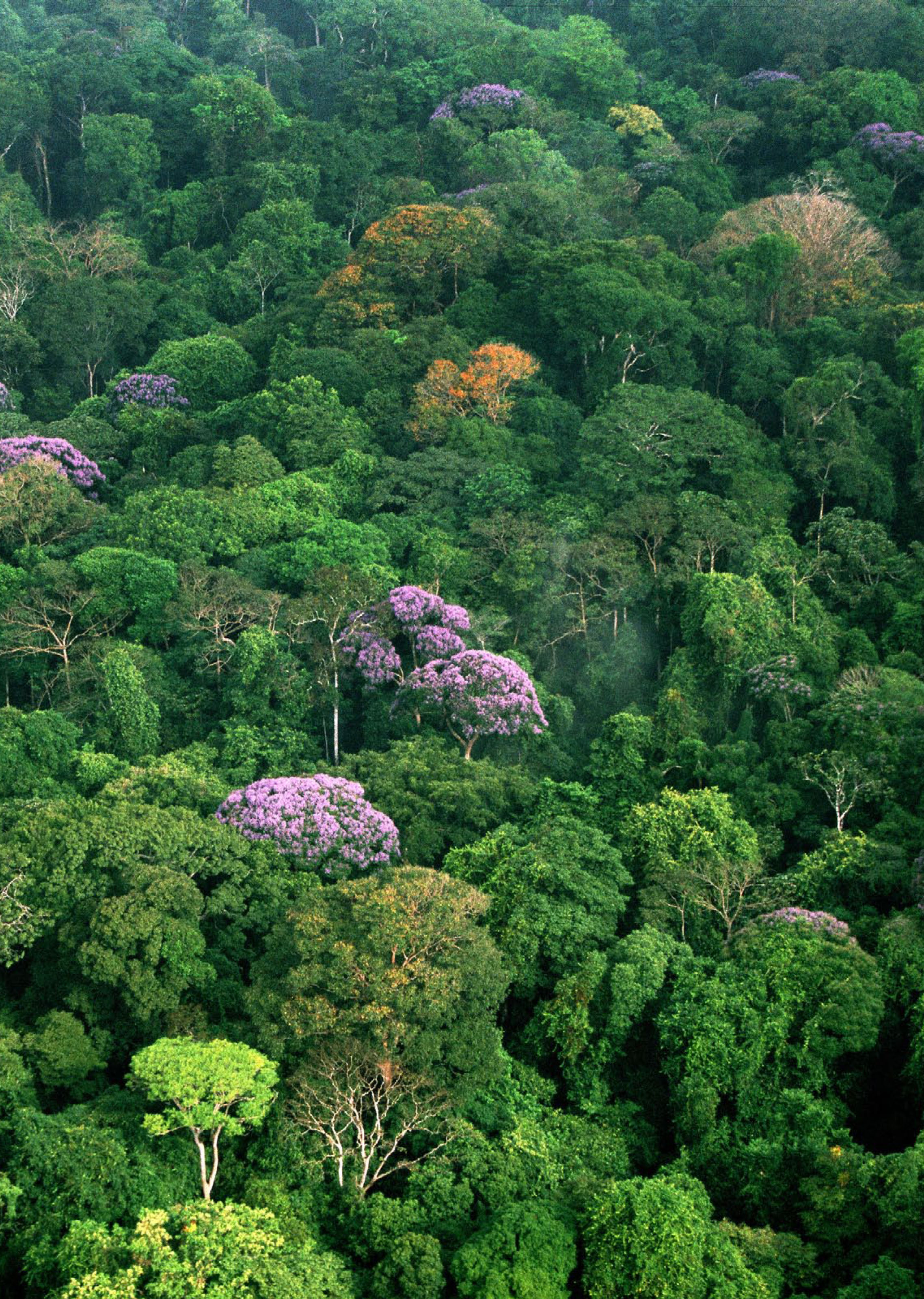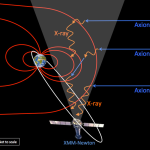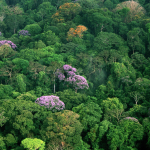The tropical forest canopy serves as a vital ecosystem, playing a crucial role in regulating the Earth’s climate and supporting immense biodiversity. With significant implications for carbon sequestration, understanding this upper layer of trees is essential as it demonstrates how climate change impacts forest health indicators worldwide. Recent insights from NASA’s Global Ecosystem Dynamics Investigation (GEDI) technology have revealed the vulnerabilities of tropical forests, particularly regarding their height variations linked to environmental factors. These studies underscore the importance of tropical forest research in addressing carbon storage and global warming. By examining the tropical forest canopy, we can better grasp the intricate balance between nature and climate change.
Often referred to as the upper stratum of lush trees, the canopy layer of tropical forests is essential to maintaining ecological balance and health. Known for its role as a buffer against extreme weather and a rich habitat for wildlife, this verdant cover is increasingly studied through advanced technologies like spaceborne LiDAR systems. By analyzing the influences of climate variables and other environmental drivers, researchers can gain valuable insights into these ecosystems’ resilience and carbon storage potential. Investigating the vegetation layer not only assists in understanding ecosystem dynamics but also highlights the urgent need for conservation against climate change threats.
Understanding Tropical Forest Canopy and Its Importance
The tropical forest canopy is a vital ecological layer that plays a crucial role in maintaining the health of our planet’s environment. This uppermost layer of trees acts as a barrier, reducing direct sunlight exposure to the lower forests while also regulating temperature and humidity levels underneath. As noted by researchers, the height of the forest canopy is considered a critical health indicator, reflecting overall ecosystem productivity and the ability to store carbon efficiently. Monitoring and understanding the condition of these canopies is essential not only for assessing biodiversity but also for gauging the impact of climate change on these sensitive environments.
Recent studies utilizing advanced NASA GEDI technology have provided unprecedented insights into how tropical forest canopies are affected by climatic variables such as heat, drought, and rainfall patterns. These observations reveal that a taller canopy facilitates greater carbon sequestration, acting as a buffer against climate extremes. Given that these forests serve as the lungs of the Earth, the health of their canopies is fundamental to global carbon cycles, making it imperative for scientists to monitor and safeguard these unique ecosystems against increasing climate change impacts.
Climate Change Impacts on Tropical Forest Canopy
The impact of climate change on tropical forest canopies is a pressing concern for researchers and environmentalists alike. Increased frequency and severity of dry seasons and rising temperatures can lead to significant alterations in canopy height, affecting not only the biodiversity supported by these ecosystems but also their capacity for carbon storage. Studies show that the southern Amazon, for instance, is particularly vulnerable to these changes, with prolonged dry seasons posing a threat to the structural integrity and health of the forest canopy.
As highlighted by findings from the Global Ecosystem Dynamics Investigation (GEDI), understanding these climate-induced variations is essential for developing effective conservation strategies. The research indicates that climate factors, alongside topography and soil type, largely dictate variations in canopy height. Consequently, this knowledge can help scientists predict future trends in forest health and develop policies aimed at mitigating adverse environmental impacts on these critically important tropical forests.
The Role of NASA GEDI Technology in Forest Studies
NASA’s Global Ecosystem Dynamics Investigation (GEDI) technology represents a groundbreaking advancement in the study of forest ecosystems, particularly tropical forests. By deploying laser-based LiDAR (Light Detection and Ranging) instruments from the International Space Station, researchers can map forest canopy heights over extensive areas, providing a comprehensive view that was previously unattainable with ground-based methods. This technology not only improves our understanding of forest structure but also illuminates how climate variables affect forest health across different regions.
With GEDI, scientists are equipped to derive critical insights into forest dynamics, including leaf density and biomass distribution within canopies. This data serves as a foundation for evaluating the ecological and conservation value of tropical forests, particularly in the context of carbon sequestration. By utilizing such advanced technologies, researchers hope to create refined models predicting how forest canopies may respond to ongoing climate change, thereby enhancing efforts to protect these ecosystems vital for global health.
Forest Health Indicators: Monitoring and Importance
Monitoring forest health indicators is essential for understanding the resilience and sustainability of tropical forests. Key indicators, such as canopy height and leaf density, provide invaluable insights into the overall condition of forests and their ability to respond to environmental stressors. As climate change continues to alter weather patterns globally, these indicators become crucial metrics for foreseeing potential consequences for forest ecosystems.
The research utilizing GEDI technology highlights that not only canopy height serves as an indicator of forest health, but it also correlates to carbon sequestration capabilities. The taller and healthier the canopy, the more effective it is at sequestering carbon, which is vital in combating climate change. By identifying and monitoring these health indicators, conservationists and policymakers can prioritize efforts to protect vulnerable forest regions, ensuring that these critical ecosystems can continue to perform their essential functions in the face of climate adversity.
Diversity of Tropical Forests: A Global Perspective
Tropical forests are not only vital for carbon storage and biodiversity; they are also ecologically diverse systems with unique structures across different geographical locations. The research conducted in various regions, including Asia, Africa, and South America, shows that each area may respond differently to climate change impacts. Understanding these regional variances is crucial for formulating effective conservation strategies that address specific local conditions while preserving the diverse ecosystems within tropical forests.
The variations in forest health indicators, coupled with climatic influences like elevation and moisture levels, necessitate a global perspective on tropical forest studies. The advancements in satellite technologies, such as NASA’s GEDI, allow scientists to gather data across vast regions, leading to a better understanding of forest conditions worldwide. This comprehensive approach can guide conservation initiatives and highlight regions in need of urgent protection against climate change.
Carbon Sequestration in Tropical Forest Canopies
Carbon sequestration is one of the most critical functions of tropical forest canopies, making their health a priority for climate change mitigation efforts. Research has shown that taller canopies with greater biomass are associated with higher rates of carbon storage. This ability to sequester carbon plays an instrumental role in slowing the pace of climate change and underscores the importance of preserving these ecosystems. By employing state-of-the-art technology like GEDI, scientists gain insights into how changes in environmental conditions affect carbon dynamics in tropical forests.
Moreover, protecting and restoring tropical forest canopies is essential to enhance their carbon sequestration capabilities. As researchers identify the main factors influencing canopy health and growth, including soil properties and climatic conditions, policymakers can develop targeted strategies to boost the carbon storage potential of these vital ecosystems. The ongoing study of tropical forest canopies is crucial in creating effective conservation policies aimed at sustaining our planet’s health and combating climate change.
Innovations in Remote Sensing: The Future of Forest Monitoring
Innovations in remote sensing technologies have transformed the landscape of ecological research, particularly in the field of forestry. NASA’s GEDI technology stands at the forefront of this transformation, providing scientists unprecedented access to detailed data on tropical forest canopies. This technology allows for the swift collection of spatially extensive datasets, enabling researchers to analyze forest structure and health with greater accuracy than ever before.
Looking ahead, the continued advancement of remote sensing technologies will likely enhance our understanding of forest ecosystems even further. As new methods are developed and applied, researchers will be better equipped to monitor changes in forest health indicators over time. This ongoing innovation will support conservation efforts by providing essential data to inform policy decisions related to environmental protection, climate resilience, and sustainable land-use practices.
The Importance of Policy in Protecting Tropical Forests
Effective policy is crucial in the fight to protect tropical forests and their vital functions on the planet. As research indicates the alarming vulnerability of these forests to climate change, it becomes imperative for policymakers to prioritize these ecosystems in conservation efforts. The insights gained from studies using NASA GEDI technology can provide the necessary evidence to underscore the importance of protecting tropical forests, encouraging legislators to enact laws that limit deforestation and promote reforestation initiatives.
Additionally, collaboration between scientists, conservationists, and policymakers can lead to more holistic approaches to managing forest ecosystems. By ensuring that climate change impacts are a core consideration in forest management strategies, we can enhance the resilience of these vital systems. Ultimately, the combination of advanced research, robust policy frameworks, and community involvement will be critical in safeguarding tropical forests for future generations.
Future Directions in Tropical Forest Research
The future of tropical forest research holds great potential as scientists continue to explore various dimensions of these complex ecosystems. With emerging technologies enabling more detailed investigations, researchers can delve deeper into the factors affecting forest health and productivity. Studies focusing on the interplay between climate change and forest dynamics will be instrumental in predicting future changes and helping to formulate responses to environmental stressors.
Furthermore, expanding research efforts to include a wider range of forest types and ecosystems beyond primary forests will provide a fuller understanding of global forestry challenges. As we move forward, integrating findings from tropical forest studies with broader ecological knowledge will be essential to develop comprehensive strategies aimed at preserving biodiversity and enhancing carbon sequestration. This proactive approach will significantly contribute to the global effort to combat climate change and sustain the earth’s vital forest resources.
Frequently Asked Questions
What is the importance of the tropical forest canopy in carbon sequestration?
The tropical forest canopy plays a crucial role in carbon sequestration by storing significant amounts of carbon dioxide. Taller canopies are associated with higher carbon storage and greater above-ground biomass, which contributes to the ecosystem’s overall productivity and health.
How does climate change impact the tropical forest canopy?
Climate change impacts the tropical forest canopy by affecting its height and structure due to factors like increased heat and prolonged droughts. Studies utilizing NASA’s GEDI technology have shown that these environmental changes significantly influence canopy health, affecting carbon storage capabilities.
What technology is being used to study the tropical forest canopy and its health?
NASA’s Global Ecosystem Dynamics Investigation (GEDI) technology, which employs LiDAR laser instruments from the International Space Station, is used to study the tropical forest canopy. This technology allows researchers to gather data on canopy height and structure, providing insights into forest health indicators.
Why are tropical forest canopies considered indicators of forest health?
Tropical forest canopies are considered indicators of forest health because their height and density reflect the overall vitality of the forest ecosystem. As a critical metric, canopy height influences carbon sequestration and biodiversity, helping assess the impacts of climate change on these vital environments.
What are the main factors influencing tropical forest canopy height as per NASA’s research?
NASA’s research indicates that climate, topography, and soil properties are the primary factors influencing tropical forest canopy height. Specifically, elevation, dry season conditions, and solar radiation significantly affect how these canopies respond to environmental changes related to climate change.
How does NASA’s GEDI technology contribute to tropical forest studies?
NASA’s GEDI technology contributes to tropical forest studies by enabling extensive measurements of canopy structure across large areas, unlike previous studies that focused on smaller regions. This comprehensive data helps researchers understand how climate change affects different tropical forest ecosystems globally.
What is the relationship between canopy height and biodiversity in tropical forest ecosystems?
Canopy height is closely related to biodiversity in tropical forest ecosystems, as taller canopies can support a greater variety of flora and fauna. The health and structure of the canopy influence habitat availability, making it critical for assessing biodiversity and overall forest health in the face of climate change.
What recommendations do scientists make regarding the protection of tropical forests amid climate change?
Scientists recommend prioritizing the protection of tropical forests due to their role as biodiversity hotspots and their importance in carbon storage. Protecting these ecosystems is essential for combating climate change, and policymakers should focus on identifying and safeguarding regions that are vulnerable to its impacts.
| Key Point | Details |
|---|---|
| Tropical Forest Canopy Importance | The canopy is a critical indicator of forest health and ecosystem productivity. |
| NASA Technology Utilization | The study used NASA’s GEDI LiDAR technology from the ISS to measure canopy height and its changes due to climate change. |
| Climate Change Effects | Droughts and heat are significantly affecting tropical forest canopy height, especially in regions like the southern Amazon. |
| Environmental Drivers | Climate factors such as temperature, drought, and soil properties account for 75% of canopy height variation. |
| Regional Variations | Effects of climate change are not uniform, with canopy height being influenced by elevation in moist areas like the central Amazon. |
| Policy Implications | The findings aim to help policymakers prioritize the protection of vulnerable tropical forest regions. |
Summary
The tropical forest canopy plays an essential role in maintaining the health of our planet, serving as a critical carbon storage reservoir and indicator of ecosystem productivity. Recent studies utilizing NASA’s advanced technology highlight the vulnerabilities faced by these forests under climate change, especially in regions like the southern Amazon. Understanding the intricate dynamics of the tropical forest canopy is vital for implementing effective conservation strategies and enhancing biodiversity, thereby supporting ongoing efforts to combat climate change.










